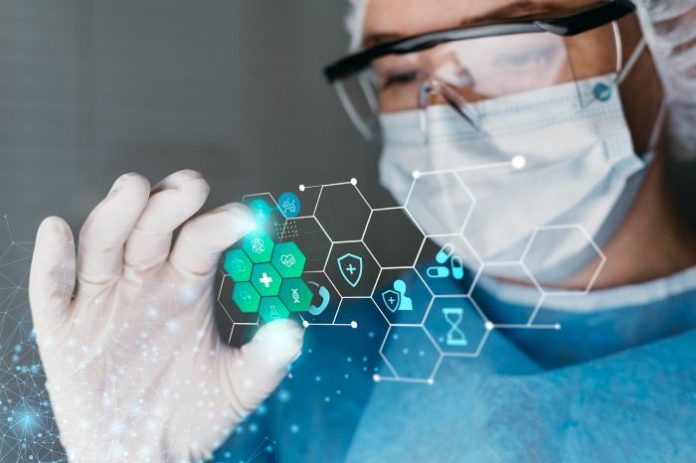Healthcare in the United States is experiencing a cultural and technological shift. Patients no longer see digital tools as optional extras—they’re now part of the digital heartbeat of modern care. They expect the same smooth digital experiences from their doctors that they already get from airlines, banks, or e-commerce platforms. Providers, meanwhile, are under pressure to cut costs, improve outcomes, and protect sensitive data.
This is not just about new gadgets. It is about a new rhythm in the way medicine is practiced and experienced. Below are five forces that are reshaping US healthcare, each one adding a new beat to the digital pulse of the industry.
Table of contents
1. Telehealth Becomes Part of the Digital Heartbeat of Everyday Medicine
Telehealth is no longer an emergency fix. According to the American Medical Association, more than 80 percent of US physicians now use telehealth in some form. Patients book video visits as naturally as they order groceries online.
The benefits are clear:
- Fewer missed appointments and better continuity of care.
- Reduced travel for patients with chronic conditions.
- Expanded access to specialists for rural communities.
Remote monitoring devices such as connected blood pressure cuffs and glucose meters now feed data directly into electronic health records. This creates a continuous feedback loop between patients and clinicians. Instead of waiting for quarterly checkups, doctors can intervene in real time.
2. Custom Software Becomes the New Stethoscope
Hospitals are realizing that generic platforms cannot handle the complexity of US healthcare. The demand for healthcare software development in the US is rising because providers need tools that integrate with legacy systems, comply with HIPAA, and scale across networks.
Custom solutions enable:
- EHR optimization that reduces physician burnout.
- Patient engagement apps that improve communication and scheduling.
- Data interoperability that connects labs, pharmacies, and insurers.
- Analytics dashboards that turn raw data into actionable insights.
A hospital in Texas reported a 25 percent reduction in patient wait times after implementing a custom scheduling system. Another provider in California saw a 40 percent increase in patient portal adoption after launching a tailored mobile app. These are not abstract benefits. They directly improve patient outcomes and satisfaction.
3. Artificial Intelligence Steps into the Clinic
AI is no longer just a buzzword. The US Food and Drug Administration has already cleared dozens of AI-based medical devices. Radiologists use AI to detect anomalies in scans, while predictive algorithms help hospitals identify patients at risk of deterioration.
AI is also transforming administration. Natural language processing tools reduce the time doctors spend on documentation. Chatbots handle routine patient questions, freeing up call centers for more complex cases.
The challenge is explainability. Clinicians need to trust the algorithms, which means transparency is as important as accuracy. Still, the trajectory is clear. AI is becoming a trusted partner in both clinical and operational decision-making, pulsing within the digital heartbeat of modern healthcare.
4. Cybersecurity Becomes a Matter of Life and Death
Hospitals have become prime targets for cybercriminals. The US Department of Health and Human Services reported a sharp rise in ransomware attacks on healthcare facilities. These attacks disrupt care, compromise sensitive data, and cost millions in recovery.
To fight back, providers are adopting blockchain pilots for secure data sharing and tamper-proof audit trails. At the same time, cybersecurity best practices are becoming non-negotiable.
Key measures include:
- End-to-end encryption of patient data.
- Multi-factor authentication for staff access.
- Zero-trust architectures that verify every connection.
- Regular penetration testing by ethical hackers.
Cybersecurity is no longer just an IT issue. It is a patient safety issue.
5. Investment Fuels a New Wave of Health Tech Innovation
Venture capital is betting big on digital health. In 2022, US startups raised 15.3 billion dollars, according to Rock Health. The hottest areas include mental health platforms, wearable biosensors, and digital therapeutics.
These investments are reshaping the very definition of healthcare.
- A Boston-based startup developed a digital therapeutic for opioid use disorder that has already received FDA approval.
- A New York company uses AI to analyze voice patterns for early signs of depression.
- Several wearable tech firms are building biosensors that track sleep quality, blood oxygen, and stress levels.
These innovations show how software is expanding the boundaries of medicine.
Conclusion
The digital heartbeat of US healthcare is growing stronger. Telehealth, AI, cybersecurity, and custom healthcare software are no longer side projects. They are the foundation of a new healthcare ecosystem that is more connected, more secure, and more patient-centered.
For providers, the challenge is to integrate these technologies without overwhelming clinicians or compromising trust. For developers, the opportunity lies in building solutions that are secure, interoperable, and easy to use.
The next decade will not just be about adopting new tools. It will be about reimagining healthcare itself, where every click, every data point, and every digital interaction becomes part of the digital heartbeat driving better outcomes and healthier lives.











